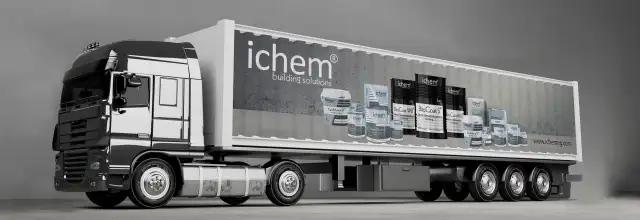
Expansion joints

Expansion joints
Expansion Joints in Concrete | Everything You Need to Know About Types, Materials, and Applications – by iChem
Have you ever noticed cracks on a concrete floor or where walls meet the ceiling?
In most cases, the reason is the absence of expansion joints in concrete — one of the most critical design elements that maintain building balance and protect structures from gradual internal damage over time.
In this guide, iChem, a leading company in waterproofing systems and expansion joint solutions, provides a comprehensive engineering overview covering:
What expansion joints in concrete are,
Their types and materials,
And why proper design and installation are an investment in your building’s durability and performance.
What Are Expansion Joints in Concrete?
Expansion joints are flexible engineering gaps or separations introduced between concrete sections to allow natural movement caused by temperature changes, shrinkage, or vibrations.
Without them, internal stresses accumulate, leading to structural cracks, surface damage, and early deterioration of waterproofing systems.
Simply put:
Expansion joints are the smart flexibility that keeps concrete from breaking itself over time.
Why Are Expansion Joints Used in Concrete?
The main purpose of expansion joints is to absorb movement instead of resisting it.
Every concrete structure expands and contracts due to temperature variation, mechanical loads, or environmental conditions.
Expansion joints give the structure the freedom to move naturally while maintaining structural integrity and aesthetic consistency.
Key Benefits of Expansion Joints:
Prevent structural cracks and uneven settlement.
Maintain waterproofing and thermal insulation in roofs and floors.
Reduce future maintenance and repair costs.
Enhance long-term structural stability and performance.
Types of Expansion Joints in Concrete
Here are the most common types of expansion joints used in concrete structures:
Thermal Expansion Joints:
Absorb thermal expansion due to temperature variations. Commonly used in exposed roofs and large slab areas.Contraction Joints:
Control cracking caused by concrete shrinkage during curing.Construction Joints:
Implemented between different concrete pours to minimize stress and ensure proper bonding.Seismic Joints:
Allow independent movement between building sections during earthquakes or vibrations.
Materials Used for Concrete Expansion Joints
Choosing the right expansion joint material directly impacts the structure’s durability and the joint’s long-term performance.
iChem provides a wide range of materials and systems that comply with ASTM and BS international standards:
Material Type | Function | Key Advantages |
|---|---|---|
Polyethylene / Polyurethane Foam | Flexible filler | Lightweight, moisture-resistant, weatherproof |
PVC Waterstop Strips | Prevents water leakage | Ideal for tanks, tunnels, and water-retaining structures |
Sealants (Elastomeric or Silicone) | Flexible joint sealing | High chemical and thermal resistance |
Bituminous / Epoxy Compounds | Fills ground and floor joints | Strong adhesion and long-lasting durability |
iChem Expansion Joint Systems – Engineered for Long-Term Performance
With over 15 years of experience in construction chemicals and waterproofing,
iChem offers fully integrated expansion joint systems, covering design, supply, and installation, using cutting-edge technologies and certified materials.
iChem Expansion Joint Systems:
E-Joint System: Expansion joints for industrial floors and concrete pavements.
E-Seal Flex: Flexible waterproofing and sealing materials.
E-Waterstop Rubber: Water-resistant rubber strips for tanks, tunnels, and water structures.
E-Sil Flex: High-flexibility sealants for façades, walls, and roofing applications.
Why iChem Stands Out:
Comprehensive engineering analysis before product selection.
Chemical and UV-resistant products.
Application by trained technical teams.
Ongoing technical support and post-installation service.
Where Are Expansion Joints Used?
Concrete expansion joints are essential in a wide range of projects, including:
Industrial buildings and large warehouses.
Exposed concrete roofs and exterior pavements.
Tanks, tunnels, and water treatment facilities.
Airports, bridges, and major infrastructure projects.
A properly designed expansion joint system means a structure that lasts longer, performs better, and costs less to maintain.
Frequently Asked Questions
What is the ideal spacing between expansion joints in concrete?
It depends on the project type, but typically ranges between 6 to 30 meters for horizontal concrete elements.
Can expansion joints be installed after concrete pouring?
Yes. They can be created by saw cutting within 24 hours after pouring to control early-age cracking.
What’s the difference between expansion and contraction joints?
Expansion joints allow external movement (expansion), while contraction joints control internal shrinkage cracks during curing.
Why iChem Is the Trusted Partner for Expansion Joint Solutions
iChem doesn’t just supply materials — it delivers complete engineered solutions.
From analyzing concrete behavior to selecting and installing the right joint system,
iChem is a trusted partner for engineers, consultants, and contractors across Egypt and the Middle East,
supporting infrastructure, commercial, and industrial projects with proven, high-performance systems.







